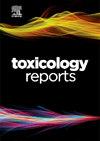Global scenario of silica-associated diseases: A review on emerging pathophysiology of silicosis and potential therapeutic regimes
Q1 Environmental Science
引用次数: 0
Abstract
Silicosis is an occupational fibrotic lung disease caused by exposure to respirable crystalline silica dust particles produced during industrial activities. Other crystalline silica-induced pulmonary disorders include a predisposition to mycobacterial infections, obstructive airway diseases, idiopathic pulmonary fibrosis, and lung cancer. This review paper discusses the burden of silicosis and associated co-morbidities in developed as well as developing countries globally using the published data of various government agencies, related organizations, and epidemiological findings. Moreover, it sheds light on diverse mechanisms of silicosis, outlining molecular events and peculiar alterations in lung parenchyma leading to this occupational lung disease. Evaluation of pathophysiological mechanisms could aid in the identification of novel target molecules and treatments; to date, there is no curative treatment for silicosis. In recent periods, a lot of attention has been focused on the development and fabrication of suitable nanocarriers for improved and sustained drug delivery in the pulmonary system. Nanoparticle-based therapeutic modality has been evaluated in in-vitro and ex-vivo silicosis models for prolongation of drug activity and improved therapeutic outcomes. The preclinical findings open the doors to clinical trials for operational and regenerative nanoformulations, which eventually create a positive change in medical practice. The following review summarizes various therapeutic approaches available and in the pipe line for silicosis and also stresses the preventive practices for effectively combating this occupational hazard.
二氧化硅相关疾病的全球情况:对新出现的矽肺病理生理和潜在治疗方案的综述
矽肺病是一种职业性纤维化肺病,因接触工业活动中产生的可吸入结晶二氧化硅粉尘颗粒而引起。其他结晶二氧化硅引起的肺部疾病包括分枝杆菌感染、阻塞性气道疾病、特发性肺纤维化和肺癌的易感性。这篇综述文章利用不同政府机构、相关组织公布的数据和流行病学调查结果,讨论了全球发达国家和发展中国家矽肺的负担和相关合并症。此外,它还揭示了矽肺的多种机制,概述了导致这种职业性肺病的分子事件和肺实质的特殊改变。对病理生理机制的评估有助于发现新的靶分子和治疗方法;到目前为止,还没有治愈矽肺病的方法。近年来,人们一直关注于开发和制造合适的纳米载体,以改善和持续地在肺系统中给药。基于纳米颗粒的治疗方式已经在体外和离体矽肺模型中进行了评估,以延长药物活性并改善治疗结果。临床前研究结果为可操作和再生纳米配方的临床试验打开了大门,最终在医疗实践中产生积极的变化。以下综述总结了矽肺病的各种治疗方法,并强调了有效防治这一职业危害的预防措施。
本文章由计算机程序翻译,如有差异,请以英文原文为准。
求助全文
约1分钟内获得全文
求助全文
来源期刊

Toxicology Reports
Environmental Science-Health, Toxicology and Mutagenesis
CiteScore
7.60
自引率
0.00%
发文量
228
审稿时长
11 weeks
 求助内容:
求助内容: 应助结果提醒方式:
应助结果提醒方式:


